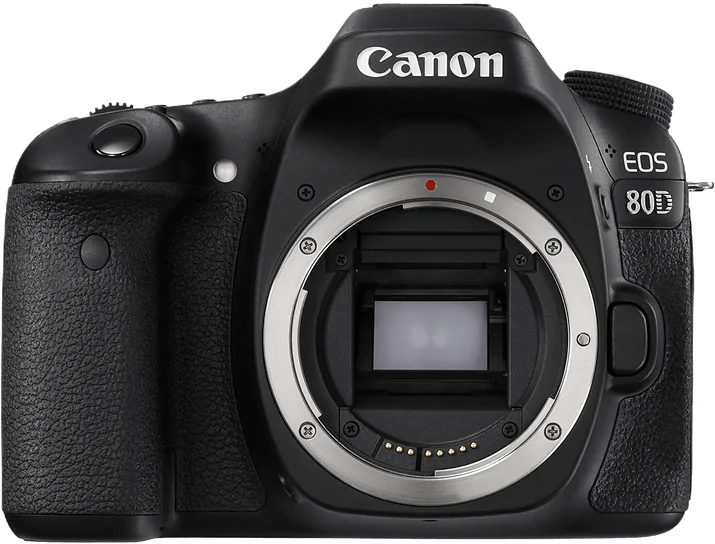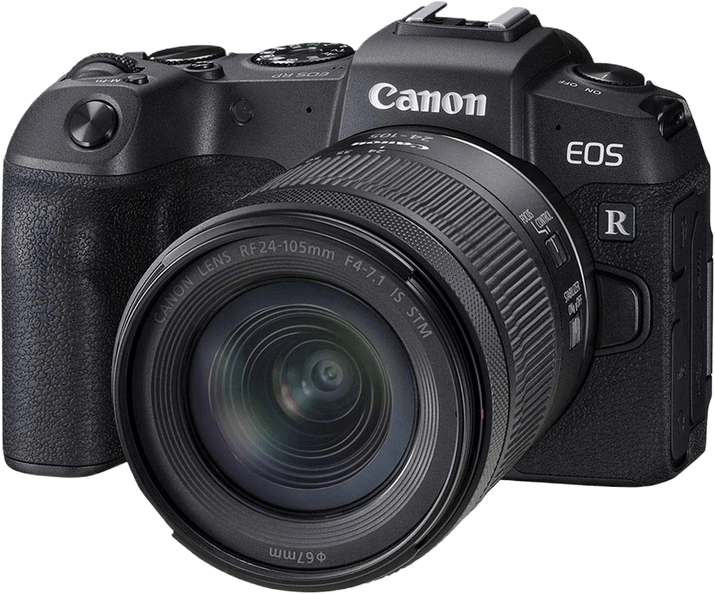Canon EOS 80D vs EOS RP Comparison
Canon EOS 80D

Canon EOS RP

The Canon EOS RP outperforms the Canon EOS 80D with a score of 65/100 compared to the 80D’s 64/100. Both cameras were announced in February, with the 80D in 2016 and the RP in 2019. The launch price of the 80D was $1200, while the RP was slightly more expensive at $1300.
Both cameras share some similarities in size, with the 80D measuring 139 x 105 x 79mm and the RP at 133 x 85 x 70mm. The main advantage of the EOS RP is its lighter weight, coming in at 440g compared to the 80D’s 730g. This makes the RP more portable and convenient for on-the-go photography.
The 80D, being a DSLR, is slightly bulkier than the mirrorless RP. Despite its lower score, the 80D still has its merits, especially for those who prefer the feel and handling of a DSLR camera.
Taking all factors into consideration, the Canon EOS RP is a slightly better option with a higher score, lighter weight, and more recent release. However, the Canon EOS 80D remains a viable choice for those who appreciate the DSLR form factor.
Canon EOS 80D vs EOS RP Overview and Optics
The Canon EOS RP takes the lead in optics with a score of 67 out of 100, compared to the Canon EOS 80D’s score of 63. Both cameras share some common specifications, such as having a CMOS sensor, no image stabilization, and the same shooting speed. However, there are key differences that contribute to the higher score of the EOS RP.
The EOS RP has a higher megapixel count of 26, compared to the EOS 80D’s 24.2. This allows the RP to capture more detail in images. Additionally, the EOS RP features a more advanced processor, the Digic 8, which results in better image processing and overall performance. Another significant advantage of the EOS RP is its full-frame sensor size, which provides better low-light performance and a wider dynamic range. Moreover, the EOS RP has a higher DXOMARK score of 85 for its sensor, compared to the EOS 80D’s score of 79.
On the other hand, the EOS 80D has a faster shooting speed of 7 frames per second, compared to the EOS RP’s 5. This makes it slightly better for capturing fast-moving subjects, such as sports or wildlife photography. The EOS 80D also features a Canon EF-S lens mount, which offers compatibility with a wider range of lenses.
Taking these factors into account, the Canon EOS RP stands out as the better camera in terms of optics due to its higher megapixel count, advanced processor, full-frame sensor, and better overall sensor performance. The EOS 80D, while having a faster shooting speed and a wider range of lens compatibility, falls behind in key areas that contribute to image quality. Therefore, the Canon EOS RP is the superior choice for photographers prioritizing optics performance.
Canon EOS 80D vs EOS RP Video Performance
The Canon EOS 80D and Canon EOS RP have the same video score of 70/100. Both cameras share some common video specifications, including time-lapse functionality built in.
The Canon EOS RP has a higher maximum video resolution of 4K (3840 x 2160) compared to the Canon EOS 80D’s Full HD (1920 x 1080) resolution. This means that the EOS RP can produce better quality videos with more detail and clarity. However, the EOS 80D has a higher maximum video frame rate of 60fps, while the EOS RP has a maximum frame rate of 25fps. This advantage allows the EOS 80D to capture smoother videos, particularly useful for fast-moving subjects or slow-motion playback.
Despite its lower video resolution, the Canon EOS 80D is better in terms of video frame rate. This makes it more suitable for capturing action or sports scenes, where a higher frame rate is essential for smooth playback. On the other hand, the Canon EOS RP’s higher video resolution makes it more suitable for videographers who prioritize video detail and sharpness.
Considering the video capabilities of both cameras, the Canon EOS 80D is a better choice for those who need smooth video playback and are willing to compromise on resolution. The Canon EOS RP is more suitable for those who prioritize video quality and detail but can compromise on frame rate. Each camera has its strengths and weaknesses in terms of video capabilities, and the choice depends on the user’s preferences and specific needs.
Canon EOS 80D vs EOS RP Features and Benefits
The Canon EOS 80D and the Canon EOS RP both score 70/100 in terms of features, making them equal in this aspect. They share several specifications, such as a 3-inch screen size, a screen resolution of 1,040,000 dots, a touchscreen, a flip screen, and Wi-Fi connectivity. Neither camera has GPS functionality.
The Canon EOS RP has an advantage over the EOS 80D in terms of Bluetooth connectivity, which the EOS 80D lacks. This feature allows the EOS RP to connect wirelessly to other devices, providing additional options for remote control and image sharing.
On the other hand, the Canon EOS 80D does not offer any distinct advantages in features over the EOS RP. Both cameras have the same score, and their shared specifications make them comparable in terms of features.
Considering the shared specifications and the advantage of Bluetooth in the EOS RP, it is clear that both cameras offer a similar user experience in terms of features. The EOS RP has a slight edge due to Bluetooth connectivity, but this may not be a deciding factor for some users. When choosing between the Canon EOS 80D and the Canon EOS RP, potential buyers should consider other aspects of the cameras, such as price, optics, and video capabilities, to determine which camera best meets their needs.
Canon EOS 80D vs EOS RP Storage and Battery
The Canon EOS 80D outperforms the Canon EOS RP in storage and battery, scoring 43/100 compared to the RP’s 29/100. Both cameras have one memory card slot and accept SD, SDHC, and SDXC cards. The 80D is compatible with UHS-I cards, while the RP is compatible with the faster UHS-II cards.
The 80D’s superior battery life of 960 shots, using the LP-E6N battery, makes it more reliable for extended shooting sessions. The RP, on the other hand, offers a shorter battery life of 250 shots with the LP-E17 battery. One advantage the RP has over the 80D is its USB charging capability, allowing for convenient charging options.
Considering the storage and battery aspects, the Canon EOS 80D is the better choice for photographers who require longer battery life and consistent performance. The Canon EOS RP, while offering faster memory card compatibility and USB charging, falls short in providing adequate battery life for demanding shooting situations.
Canon EOS 80D vs EOS RP – Our Verdict
Are you still undecided about which camera is right for you? Have a look at these popular comparisons that feature the Canon EOS 80D or the Canon EOS RP:

